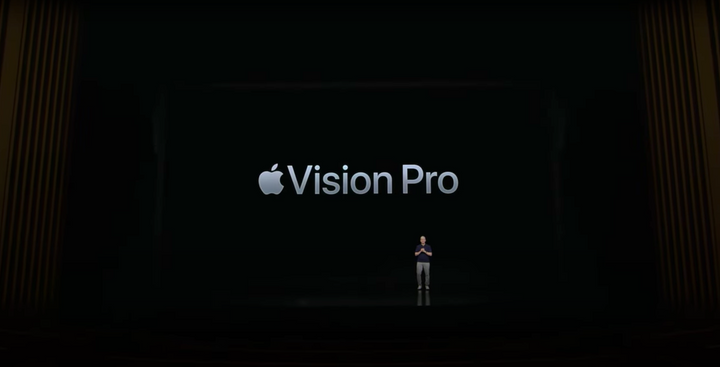The Implosion of the Titanic Submersible: What We Have Learned So Far
A tourist submersible named Titan vanished while on a mission to investigate the Titanic, the most well-known shipwreck in history. Five men were on the submersible, an exploration program run by OceanGate Expeditions.

On June 18, 2023, a tourist submersible named Titan vanished while on a mission to investigate the Titanic, the most well-known shipwreck in history. Five men were on the submersible, an exploration program run by OceanGate Expeditions. This business charges clients for deep-sea excursions. The guys were
- Stockton Rush, the founder and CEO of OceanGate Expeditions and a former Titan pilot
- Hamish Harding, a British billionaire who runs the private jet service provider Action Aviation
- Paul-Henri Nargeolet, a former naval officer and French dive expert who has made more than 30 trips to the Titanic
- Shahzada Dawood is a well-known businessman from Pakistan and the head of the conglomerate Dawood Hercules Corporation, which has interests in the energy, fertilizer, and food industries.
- Suleman Dawood, a 19-year-old Harvard University student and Shahzada Dawood's son
The Titan was built to withstand intense pressure and cold and was found up to 4,000 meters (13,000 feet) beneath the surface of the deep ocean. The Titanic, which sank in 1912 after colliding with an iceberg and claimed the lives of more than 1,500 people, was photographed and recorded using high-definition cameras, sonar, and lights.
The trip was one of many that OceanGate had organized to examine the Titanic's state and spread knowledge about its preservation. The two nations with jurisdiction over the wreck site, Canada and France, have permitted the company to conduct its operations.
On June 15, the Titan sailed from St. John's, Newfoundland, aboard its mothership, the Horizon Arctic, an OceanGate-chartered research ship. Over two weeks, the submersible was supposed to make six dives, each lasting roughly six hours.
On June 16, Rush and Harding completed the first dive successfully, piloting the Titan while Nargeolet acted as a mission specialist. The second dive was scheduled for June 18, with Rush and Harding again in charge and Shahzada Dawood and his son Suleman joining as passengers.
According to OceanGate, the Titan began its descent at around 9:30 a.m. local time on Sunday. It was expected to reach the Titanic around 10:45 a.m. and explore the wreck for about three hours before returning to the surface.
However, something went wrong during the dive. The last communication from the Titan was received at 10:15 a.m. when it reported that it was at 3,500 meters (11,500 feet) depth and had encountered some turbulence. After that, there was no further contact with the submersible or its crew.
OceanGate and its partners launched a frantic search operation that included numerous ships and aircraft from Canada, the United States, France, and Norway. The search area covered more than 20,000 square kilometres (7,700 square miles) of the ocean.
The U.S. Coast Guard revealed on June 22 that it had discovered submersible debris close to the Titanic's bow on the ocean floor after four days of searching without finding the Titan or its crew. The Titan had a "catastrophic implosion" at some point during its descent, the Coast Guard claimed after analyzing acoustic data and video footage from a remotely operated vehicle (ROV).
Under the intense pressure of the deep sea, one or more of the submersible's systems or components probably failed, leading to the implosion. Anyone inside would have perished instantly in the implosion.
The five men on board died, and the Coast Guard said it had informed their families and offered its condolences. Additionally, it declared that it had stopped actively looking for survivors.
The Canadian Transportation Safety Board (TSB) reported looking into the incident and speaking with passengers on Titan's mothership. The TSB declared it would look into all the data and proof to ascertain what factors contributed to the implosion.
The Royal Canadian Mounted Police (RCMP) added that they are investigating the incident to see if any criminal or administrative laws have been broken. The RCMP declared that it would collaborate closely with other agencies looking into the matter.
In a statement released Thursday, OceanGate Expeditions expressed its "devastation" at losing the Titan and its crew. The business declared that it fully cooperated with law enforcement and would investigate the incident internally.
The company also defended Titan's certification and safety, claiming it had complied with or surpassed all relevant standards and laws. The company claimed that both before and during operations, the Titan had undergone rigorous testing and inspection.
The company remembered the five men who perished as "explorers, adventurers, and trailblazers" who shared a love of the ocean and its mysteries. The business claimed their friends, family, and coworkers would carry their legacy.
The incident horrified and saddened ocean lovers, scientists, and explorers worldwide. Numerous messages of sympathy and admiration have been sent to the victims and their families.
James Cameron, the acclaimed deep-sea explorer and Titanic director who has been to the wreck 33 times, expressed his "heartbreak" over the news. He claimed to have interacted with a few of the Titan's crew members, describing them as "good people with a lot of enthusiasm for exploration."
Additionally, Cameron claimed that he had forewarned OceanGate of the dangers of using the Titan, claiming that it was insufficiently built and tested for marine operations. He claimed that in 2019, he wrote to the business to warn them that they were "on a path to catastrophe." He expressed the hope that the incident would serve as a reminder for the sector to raise its standards and procedures for safety.
One of the most famous and tragic symbols in human history is the Titanic. Additionally, it is among the world's most beautiful and vulnerable underwater locations. Due to both natural and artificial factors like corrosion, currents, marine life, and salvage efforts, the wreck is slowly deteriorating.
An international pact signed in 2003 by the United States, Canada, France, and the United Kingdom safeguards the Titanic. The agreement forbids unauthorized activities on or near the wreck site, including diving, exploration, and recovery. The agreement recognizes the Titanic as a memorial to those who died in the ship's sinking.
The loss of the Titan and its crew serves as a reminder of the risks and difficulties involved in deep-ocean exploration. It also serves as a testament to the bravery and zeal of those who want to learn more about its mysteries and wonders.



